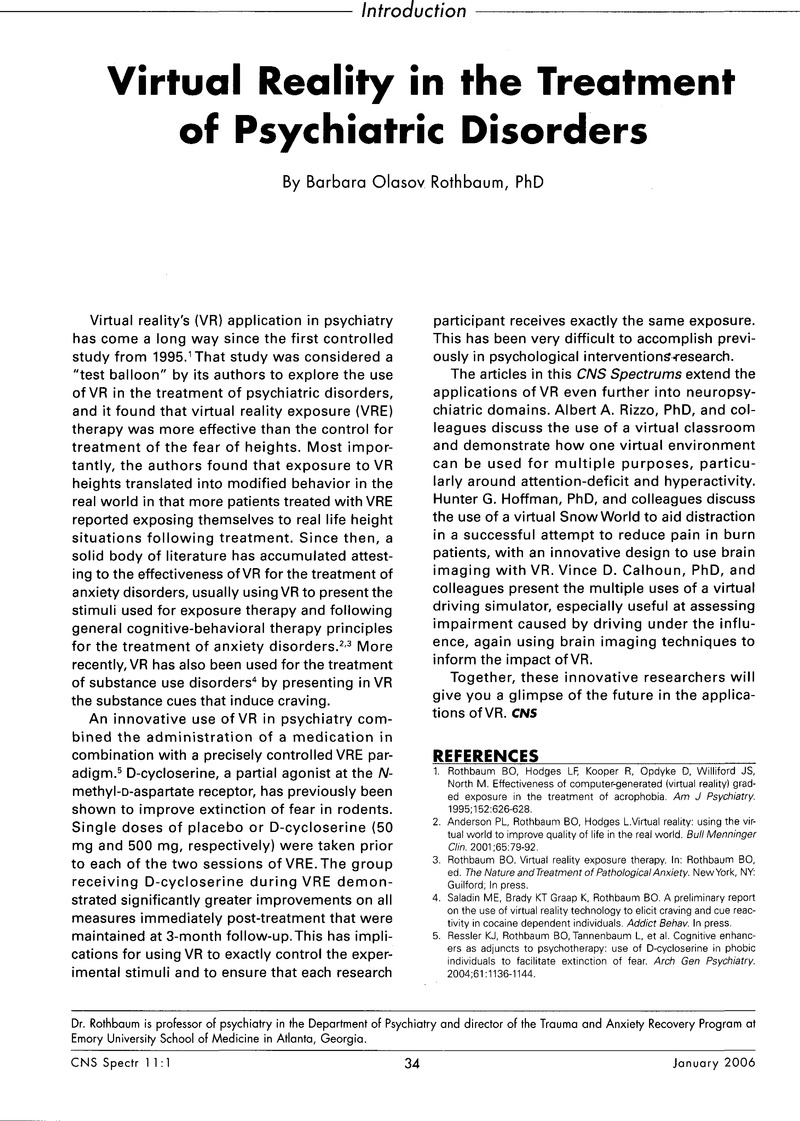Crossref Citations
This article has been cited by the following publications. This list is generated based on data provided by Crossref.
Meyerbröker, Katharina
2014.
The Wiley Handbook of Anxiety Disorders.
p.
1310.
Evans, Jennifer
Webster, Sue
Gallagher, Susan
Brown, Peter
and
Sinclair, John
2015.
Simulation in Nursing Education: iPod As a Teaching Tool for Undergraduate Nurses.
Issues in Mental Health Nursing,
Vol. 36,
Issue. 7,
p.
505.
Bordnick, Patrick S.
and
Washburn, Micki
2019.
Virtual Reality for Psychological and Neurocognitive Interventions.
p.
131.



